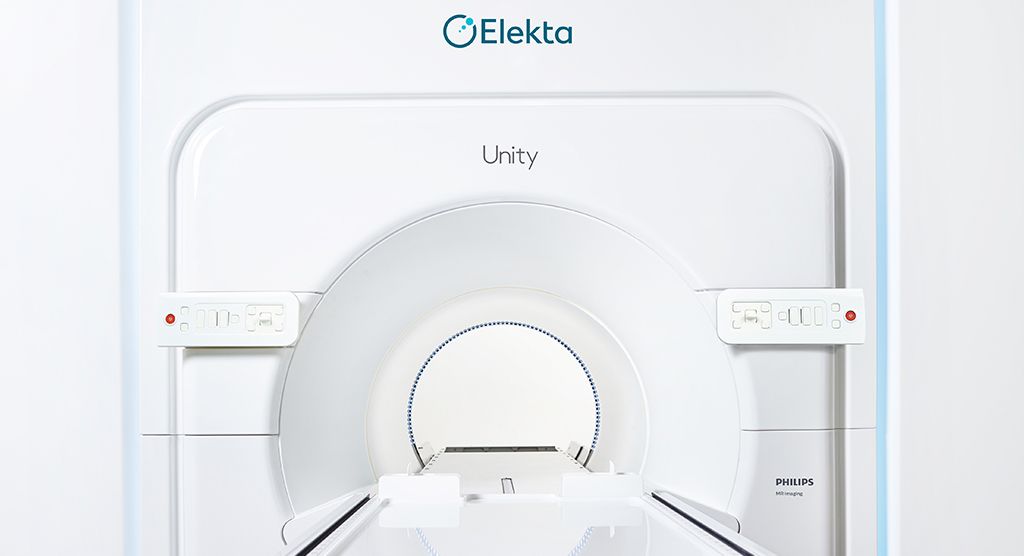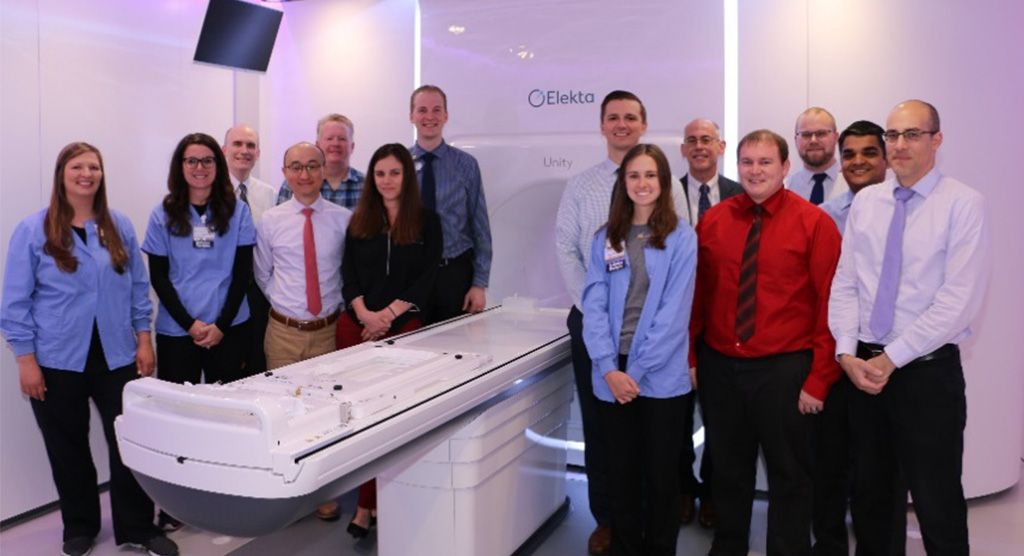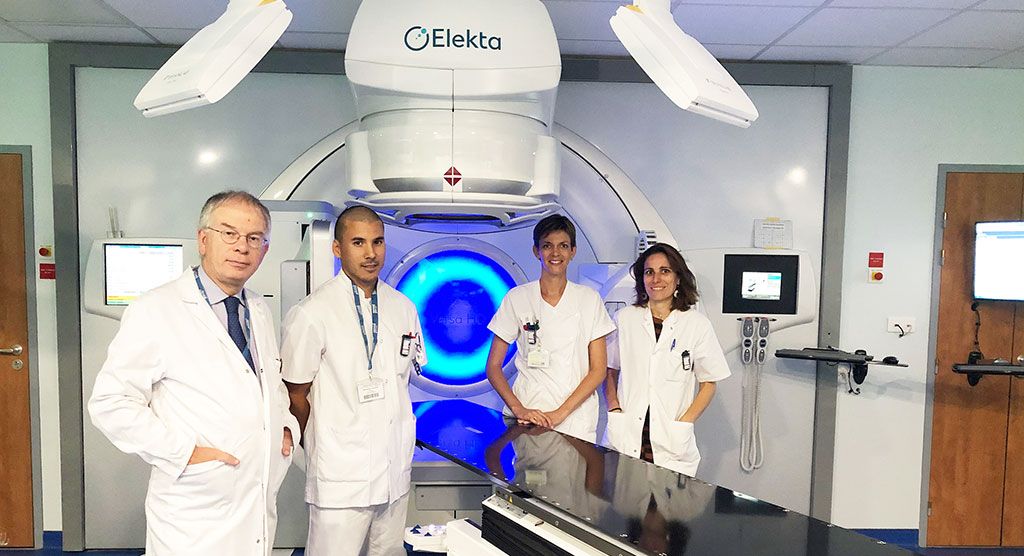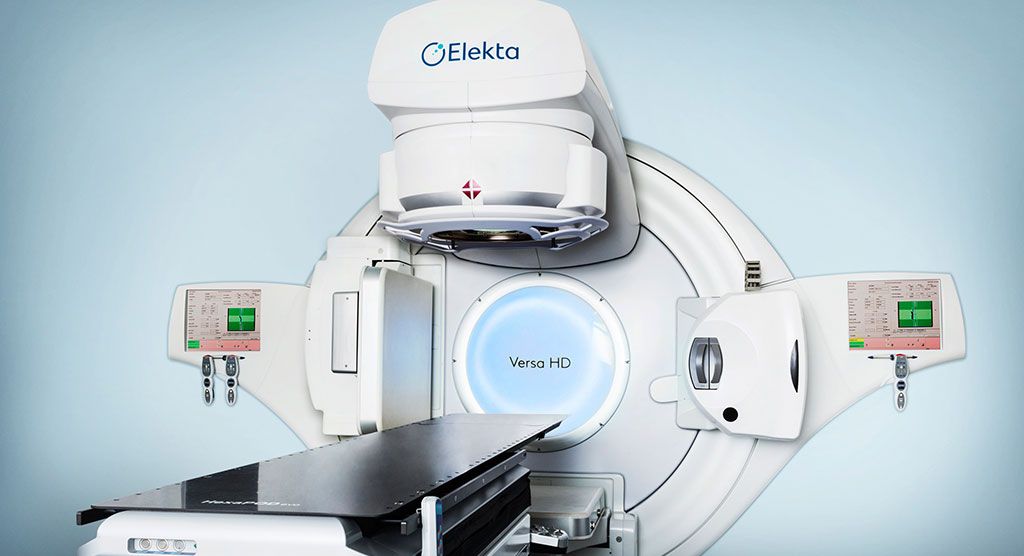Study confirms Elekta’s MR-Linac feasible and accurate for quantitative imaging

Centers using Elekta Unity systems demonstrate practicality of daily quantitative imaging for treatment response monitoring and biomarker discovery
In addition to enabling clinicians to see what they treat during the radiotherapy delivery of treatment beams, Elekta Unity – a 1.5T MR-Linac – could be employed to provide up-to-date functional information about a tumor for monitoring treatment response and biomarker discovery. Quantitative MRI (qMRI) includes techniques such as T1 and T2 mapping, diffusion-weighted imaging (DWI) for apparent diffusion coefficient (ADC) and dynamic contrast-enhanced (DCE-) MRI, all of which can measure a tumor’s functional aspects, which clinicians could use in decisions regarding whether to adapt therapy. In a recent multi-center study, research teams at four institutions conducted a performance assessment of these qMRI measures on their Elekta Unity systems.1
The aim of the study was to determine the accuracy, repeatability and reproducibility of T1 and T2 mapping, DWI and DCE-MRI in phantoms on Unity. Accuracy is the ability of the MR-Linac to recreate the reference values from the phantom, repeatability is the ability of a single MR-Linac to measure the same value at different times, and reproducibility is the measure of how consistent the different systems are with each other. Another study goal was to show the feasibility of qMRI by acquiring quantitative maps in a prostate cancer patient.

Biomarkers useful in diagnosis and assessing treatment response
A biomarker is a particular quantitative imaging measure that has shown to be a reliable surrogate for a pathophysiological process. Measuring a biomarker over a certain period of time might be a technique that is helpful in diagnosing cancer, as well as assessing – or even predicting – the response of cancer to various therapies.
Studies that explore the quantitative measures obtained with DCE-MRI suggest that certain observations, such as a reduction in Ktrans (i.e., from baseline to later timepoints in chemotherapy), are found to be a predictive biomarker of clinical outcome.
For DWI, it is known that cancers show significantly reduced ADC values in comparison to healthy tissues. This is attributed to the increased cell density of malignancies, and, under the influence of effective treatment, rising ADC values can be observed. These changes occur at the cellular level before changes in gross tumor size.
Results
- Median accuracy: For T1, median accuracy ranged over the four systems from 2.7 to 14.3%, for T2 from 10.4 to 14.1% and for ADC from 1.9 to 2.7%. For DCE-MRI images, accuracy ranged from 12.8 to 35.8% for a gadolinium concentration of 0.5 mM and deteriorated for higher concentrations.
- Median short-term repeatability: For T1, the value ranged from 0.6 to 5.1%, for T2 from 0.4 to 1.2%, and for ADC from 1.3% to 2.2%. DCE acquisitions showed a coefficient of variation of 0.1-0.6% in the signal intensity. Long-term repeatability: 1.8% for T1, 1.4% for T2, 1.7% for ADC, and 17.9% for DCE-MRI.
- Reproducibility: 11.2% for T1, 2.9% for T2, 2.2% for ADC, and 18.4% for DCE.
The researchers concluded that the “accuracy and repeatability for T1 and T2 are similar to literature values from diagnostic systems…this indicates that the Unity MR-Linac performs similar to diagnostic systems and can be used for treatment response monitoring and biomarker discovery studies.”
“This study demonstrates a unique clinical capability of this novel treatment platform, opening the door to research that would have been impractical without the routine use of the MR Linac,” adds Elekta Distinguished Scientist, Kevin Brown. “This will drive learning and eventual change in clinical practice.”
Learn more about Elekta Unity.
1. Kooreman ES, van Houdt PJ, Nowee ME. Feasibility and accuracy of quantitative imaging on a 1.5 T MR-linear accelerator. Radiotherapy and Oncology 133 (2019) 156-162. DOI: https://doi.org/10.1016/j.radonc.2019.01.011
Elekta Unity is CE-marked and 510(k) cleared. Not commercially available in all markets. DWI is CE-marked and 510(k) cleared for brain applications. Intended for imaging purposes.





